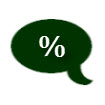!– This material is non-exclusively licensed to Shmuel Shayowitz and may not be copied, reproduced, or sold in any form whatsoever.–>
 Last week, the S&P/Case-Shiller Index showed home prices gaining 8.1 percent during the 12-month period ending January 2013, marking the largest year-over-year increases since the summer of 2006.
Last week, the S&P/Case-Shiller Index showed home prices gaining 8.1 percent during the 12-month period ending January 2013, marking the largest year-over-year increases since the summer of 2006.
The Case-Shiller Index measures changes in home prices by tracking same-home sales throughout 20 housing markets nationwide; and the change in sales price from sale-to-sale.
Detached, single-family residences are used in the Case-Shiller Index methodology and data is for closed purchase transactions only.
All 20 Case Shiller Index Markets Show Growth
Between December 2012 and January 2013, home values rose in all 20 Case-Shiller Index markets, with previously-hard hit areas such as Phoenix, Arizona leading the national price recovery.
Another notable gainer was New York, which posted the first year-over-year increase following 28 straight months of negative annual returns.
The top three yearly “gainers” for as of January 2013 were:
- Phoenix, Arizona : +23.2 percent
- San Francisco, California : +17.5 percent
- Las Vegas, Nevada : +15.3 Percent
Other year-over-year double digit gainers in home value were Atlanta, Detroit, Los Angeles, Miami, and Minneapolis.
Broader Numbers Support Widespread Housing Recovery
These strong annual home value increases continue to support the overall housing recovery.
There have been year-over-year double digit increases in home building permits and new housing starts as of February 2013 as well.
And foreclosure filings have fallen to only three-fourths of their previous annual levels.
It should be noted, however, that the Case-Shiller Index is an imperfect gauge of home values.
First, as mentioned, the index tracks changes in the detached, single-family housing market only. It specifically ignores sales of condominiums, co-ops and multi-unit homes.
Second, the Case-Shiller Index data set is limited to just 20 U.S. cities. There are more than 3,000 cities nationwide, which illustrates that the Case-Shiller sample set is limited.
And, lastly, the home sale price data used for the Case-Shiller Index is nearly two months behind its release date, rendering its conclusions somewhat out-of-date.
That said, the Case-Shiller Index joins the bevy of home value trackers pointing to home price growth over the last year.
A good next step for getting up-to-date home values in the River Edge area is to contact a qualified, licensed real estate professional.</p

















